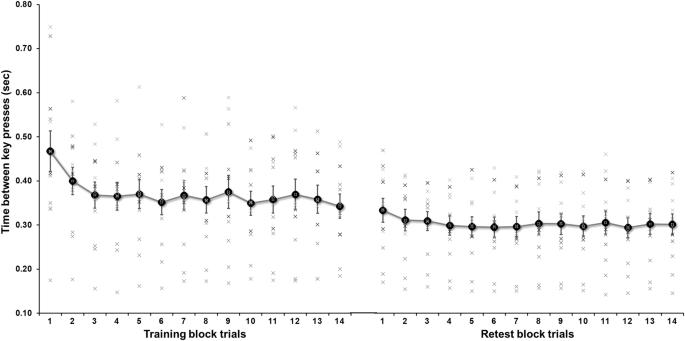运动学习可促进特定区域的纺锤体-慢波耦合大脑记忆再激活。
IF 5.2
1区 生物学
Q1 BIOLOGY
引用次数: 0
摘要
睡眠对新获得记忆的最佳巩固至关重要。本研究探讨了睡眠期间通过再激活巩固记忆的神经生理学过程。在此,我们研究了慢波-纺锤体(SW-SP)耦合对运动序列学习后特定区域任务大脑再激活的影响。我们利用睡眠期间的同步脑电图-核磁共振成像(EEG-FMRI)发现,记忆的重新激活与耦合的SW-SP复合体时间锁定,特别是在对运动序列学习至关重要的区域。值得注意的是,这些反应仅限于积极参与学习任务的半球。这种区域特异性凸显了一种精确而有针对性的神经机制,强调了 SW-SP 耦合的关键作用。此外,我们还观察到双重解离现象,即初级感觉区的招募与未耦合棘波的时间锁定;这表明未耦合棘波在睡眠维持中的作用。这些发现使我们进一步了解了SW-SP耦合在以区域特异性方式增强记忆方面的功能意义,这种耦合在功能上可与非耦合主轴分离。本文章由计算机程序翻译,如有差异,请以英文原文为准。

Motor learning promotes regionally-specific spindle-slow wave coupled cerebral memory reactivation
Sleep is essential for the optimal consolidation of newly acquired memories. This study examines the neurophysiological processes underlying memory consolidation during sleep, via reactivation. Here, we investigated the impact of slow wave - spindle (SW-SP) coupling on regionally-task-specific brain reactivations following motor sequence learning. Utilizing simultaneous EEG-fMRI during sleep, our findings revealed that memory reactivation occured time-locked to coupled SW-SP complexes, and specifically in areas critical for motor sequence learning. Notably, these reactivations were confined to the hemisphere actively involved in learning the task. This regional specificity highlights a precise and targeted neural mechanism, underscoring the crucial role of SW-SP coupling. In addition, we observed double-dissociation whereby primary sensory areas were recruited time-locked to uncoupled spindles; suggesting a role for uncoupled spindles in sleep maintenance. These findings advance our understanding the functional significance of SW-SP coupling for enhancing memory in a regionally-specific manner, that is functionally dissociable from uncoupled spindles. Simultaneous EEG-fMRI shows that slow wave-coupled sleep spindles promote region-specific memory reactivation after motor learning, revealing distinct roles for coupled vs. uncoupled spindles in sleep-dependent memory consolidation.
求助全文
通过发布文献求助,成功后即可免费获取论文全文。
去求助
来源期刊

Communications Biology
Medicine-Medicine (miscellaneous)
CiteScore
8.60
自引率
1.70%
发文量
1233
审稿时长
13 weeks
期刊介绍:
Communications Biology is an open access journal from Nature Research publishing high-quality research, reviews and commentary in all areas of the biological sciences. Research papers published by the journal represent significant advances bringing new biological insight to a specialized area of research.
 求助内容:
求助内容: 应助结果提醒方式:
应助结果提醒方式:


